I am currently working on curves generated in tensile tests of polymer specimens. Here, I try to generate a mean curve of five data sets generated at the same composition of the samples. Unfortunately, the resulting curve is not a function but has a vertical section which is why a simple smooth is not sufficient. Is there a way to fix the smoothed curve to a defined end point in R? Or an even better way that I did not see yet?
I already tried a geometric_smooth() from ggplot2 on all data points but it did not work as wished.
My current approach:
data <- read.csv("data.csv", header = TRUE, sep = ";")
ggplot(data, aes(y=stress, x=strain))+geom_point()+geom_smooth()
In the figure, you can see that the blue average curve does not fit the actual curves near their end points, probably due to the vertical sections. That's why I want to fix it to the mean end point. Additionally, I would like to fix it to (0|0) as the blue mean curve starts somewhere above it which does not fit the actual behaviour.
